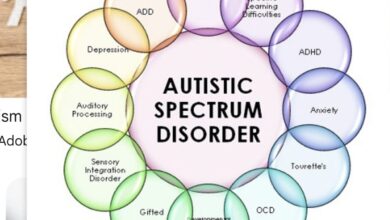ACUTE ALTITUDE SICKNESS

In Indiana, high altitude sickness is a non-existent problem. True altitude-related physical symptoms rarely occur below an altitude of 8200’ above sea level, so, since the highest point in Indiana is 1257’, altitude sickness in never seen. But for transplants who live in Arizona, or Colorado, the potential certainly exists. Arizona’s highest point is Humphrey’s Peak near Flagstaff that rises to 12,655’ above sea level, well above the safe lower limit. In fact, surprisingly, there are a total of 14 states which have elevations high enough to result in high altitude illness of some type. Even 8749’ Guadalupe Peak in Texas measures up.
As hikers ascend a mountain, the altitude increases, but more importantly, the barometric pressure of the atmosphere drops. When this occurs, the oxygen concentration in the air falls placing increased stress upon the cardiopulmonary (heart and lungs) system. The more rapid the ascent, the greater the stress on the heart, lungs, and circulation. A slower ascent allows the climber to gradually adjust to the changes, or acclimatize. At altitudes above 7000’, climbers begin to have rapid, labored breathing, and increased heart rate. At 8000’-10,000’, symptoms worsen. If the climber remains at the same altitude for 2-3 days, he will acclimate, or adjust, to his environment, and can then continue to climb with new strength and energy. At altitudes above 12,000’, slow ascent and acclimatization become increasingly more important.
A lack of oxygen in the atmosphere leads to a lower concentration of oxygen in the blood, or hypoxemia. That becomes the major factor in a climber’s problems with high altitude because when the body’s tissues are starved of oxygen, the heart and lungs react maximally to maintain a normal oxygen level. When the physical stress of low oxygen outpaces the climber’s ability to supply that oxygen, altitude sickness occurs.
There are three “types” of high altitude sickness. They are:
- Acute Mountain Sickness (AMS)—the most common, usually benign and self-limiting
- High Altitude Pulmonary Edema (HAPE)—not common, but serious
- High Altitude Cerebral Edema (HACE)—rare, life-threatening
Low blood oxygen causes a host of problems–increased production of adrenaline (epinephrine), rapid heart rate, increased blood flow to the lungs which can cause the air sacs to fill with fluid, vascular collapse, and if prolonged, damage to tissue cells.
Acute Mountain Sickness (AMS) is the most common high altitude problem. The most common symptom is headache and is required to make the diagnosis. Additionally, climbers will experience loss of appetite, nausea, dizziness, fatigue, and insomnia. Symptoms can be delayed for up to 4-12 hours after reaching a new altitude. Headache and nausea can be treated with anti-nausea and pain-relieving meds. When symptoms progress, or fail to respond to therapy, and lethargy (fatigue, loss of energy) increases, the climber may be slipping into HACE (High Altitude Cerebral Edema), which is swelling of the brain. When the brain swells, expansion is limited by the skull so compression of the brain occurs. When the headache worsens, the climber has balance or walking problems, and he becomes confused, lethargic, or comatose, HACE must be considered. HACE is potentially fatal so it must be treated ASAP as an emergency.
The third high altitude problem is HAPE (High Altitude Pulmonary Edema). Suffice it to say that climbers with prior heart and lung problems are more susceptible to HAPE. Persistently low blood oxygen levels strain the lungs’ capacity, more blood flows to the lungs, and fluid leaks from blood vessels into the air sacs, ie. pulmonary edema. Climbers first experience shortness of breath with exertion, cough, chest tightness, and reduced exercise capacity. As the edema worsens climbers become short of breath at rest, spit up pink frothy fluid, become cyanotic (blue color to the skin), have a rapid heart rate, and may have fever. HAPE is a potentially fatal condition, too.
The best treatment for AMS is prevention. “Undertaking a slow ascent to the target altitude remains the best method for altitude illness prevention.” Climbing above 8200’ the risk of altitude-related illness is real. Where climbers sleep is a critical factor for acclimatization. On consecutive nights, the altitude where one sleeps should not be more than 2000’ higher than the previous night. Resting every 3-4 days helps acclimate to altitude, too.
Drug therapy with either acetazolamide (Diamox) or dexamethasone (Decadron) is helpful, not only for prevention, but for treatment as well. Preventive doses of both drugs are half of the therapeutic dose.
In 1989, I came close to having AMS when my son and I went hiking and camping in Rocky Mountain National Park, near Estes Park, Colorado. Our ultimate goal was to climb to the highest point in the park, the summit of Long’s Peak at 14,259’. We spent most of our nights sleeping in tents at the lowest point in the park (7600’) or near Bear Lake (9600’). As a warm up for Long’s Peak, we hiked 8.5 miles to the summit of Flat Top Mountain (12,361’) and back 8.5 miles to Bear Lake. My 20 year old college swimmer son, in excellent shape, breezed to the top stopping only briefly. My hike was much slower, labored, and difficult, and I stopped to get air every 2 or 3 steps. In fact, I never reached the summit. I was so short of breath I could not go one step farther.
That night, camping near Bear Lake, I felt terrible. I was lethargic, weak, exhausted, and dehydrated. I don’t recall having a headache, but I had no appetite whatsoever. As a good Boy Scout, I was prepared having brought acetazolamide, so I took 125 mg just in case. The next morning I awoke feeling better so I didn’t take any more acetazolamide. I think I was close to having AMS and the drug reversed the symptoms.
Then, an Angel of mercy appeared disguised as a park ranger. She told us we had to pack up and leave the back country right away. At the time, there were huge wildfires going on at Yellowstone NP. To fight those fires, all but a few of the rangers at RMNP has been called away. The remaining staff of rangers was inadequate to patrol RMNP so all trails, including the trail up Long’s Peak, were closed. That incident (closing the back country) was the best thing that could have happened because there’s no way I would ever be able to climb Long’s Peak, and who knows what would have happened had I tried. I may have had HAPE. That ranger saved me from explaining why I wimped out trying to climb a 14,000’ mountain.
I doubt if more than two or three of you who read this blog have ever had occasional to develop an altitude-related illness. Thank goodness for that. I almost did. After my RMNP experience I decided to never hike at high altitude again. A wise decision.
References: Luks, AM, Swenson ER, Bärtsch P. Acute High Altitude Sickness Eur Respiratory Rev 2017;26:160096.
Butler GJ, Al-wali N, Passano DV, Ramos J, et al. Altitude mountain sickness among tourist populations: a review and pathophysiology supporting management with hyperbaric oxygen. J Med Eng Technol 2011 Apr-May;35(3-4):197-207.
Zubieta-Calleja GR, Zubieta-DeUrioste N. High altitude pulmonary edema, high altitude cerebral edema, and acute mountain sickness: an enhanced opinion from high Andes—LaPaz, Bolivia 3500 m. Rev Environment Health 2022 May 2;38(2):327-338.
I ray C, Wright A, Subudhi A, Roach R. Acute mountain sickness: pathophysiology, prevention, and treatment. Prog Cardiovascular Disease 2010 May-June;52(6):467-484.




